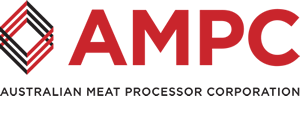The Australian red meat processing industry is estimated to have contributed over $21 billion in value add to the economy in 2015/16 and is responsible for creating nearly 130,000 jobs mostly in regional and rural Australia, according to a report commissioned by the Australian Meat Processor Corporation (AMPC).
However, that report also found that the average processing cost per head of beef is more than twice as much as it is in Brazil, 75 per cent higher than in Argentina and some 24 per cent higher than in the USA.
The Analysis of Regulatory and Related Costs in Red Meat Processing, colloquially known as the “Cost to Operate (CTO) Report”, quantifies the comparative red meat processing costs between major beef exporters Australia, USA, Brazil and Argentina.
AMPC CEO, Peter Rizzo said that the report validates and reinforces what the red meat industry has known for years but has not been able to qualify: Australia’s red meat processing costs are much higher compared to its main competitive suppliers.
“The numbers suggest that without significant reductions to the industry’s cost structure, especially those subject to regulatory impart by Government, the competitiveness of the Australian red meat processing industry, and the jobs it creates and the communities it supports, are at risk of disappearing,” Mr Rizzo said.
“Over 80 per cent of Australia’s red meat and co-products are exported, so it’s crucial that we can compete cost-wise with our key global counterparts. This report shows that Australia’s unreasonably high energy costs, extremely high regulatory burden and compounding high cost of labour, aggregated, far exceed that of our biggest competitors,” Mr Rizzo said.
“We are not talking small percentages either, but rather aggregates of close to A$100-200 a head. This economic research and analysis is the first step in identifying ways to support the sustainability of this great Australian regional and rural industry.”
The report suggests that government regulation and export certification are major contributors to this cost disparity.
The analysis found that around 54 per cent of Australian red meat processing industry input costs, excluding livestock purchases, are impacted by some form of government regulation. This is significantly higher than in the study’s comparative countries where the closest related country is the USA with 33 per cent influence.
“The research demonstrates that as an industry we have allowed these costs to continue unabashed, creating a major burden for red meat processors and putting the industry at significant risk,” Mr Rizzo said.
The report reveals that Australian processors pay far more than their competitors, as Australian export inspection and certification costs are 14 times higher than Brazil, 4.9 times higher than the USA, and 3.2 times higher than Argentina.
In these countries the in-plant certification and audit costs are borne by their respective governments, or the supply chain as a whole, as they are regarded as being in the interest of public health. In Australia, costs are entirely covered by the processors through a full government costrecovery model.
“If these charges led to greater or preferential market access then you could understand that they are a legitimate cost of business. However, increasingly this is no longer the case as South American grass-fed and USA grain-fed exports are eating into Australia’s share in its traditional markets,” Mr Rizzo said.
Utility costs, of which energy is the largest component, were also found to be much higher in Australia.
“The research shows that Australian processors were paying up to 76 per cent more for utilities than North American processors and 66 per cent more than the Argentinians. Worryingly, Australian processors are paying 8 per cent more in energy costs than the Brazilians, who are considered to have some of the most expensive energy prices in the world.
“The Australian red meat industry is reliant on demand from a global marketplace, we export red meat products to 124 different countries and that means our processors are dependent on international trade to remain viable. Our processors have limited control over impacting the market price they can command for their products, so cost competitiveness is the only way in which they can maintain a sustainable contribution to the national economy and the communities in which they operate. This report clearly demonstrates that a renewed industry and government focus on cost pressures is needed to resolve the cost burden in Australian industry,” Mr Rizzo said.
If you would like any further information, please contact Elise Mizzi at e.mizzi@ampc.com.au



